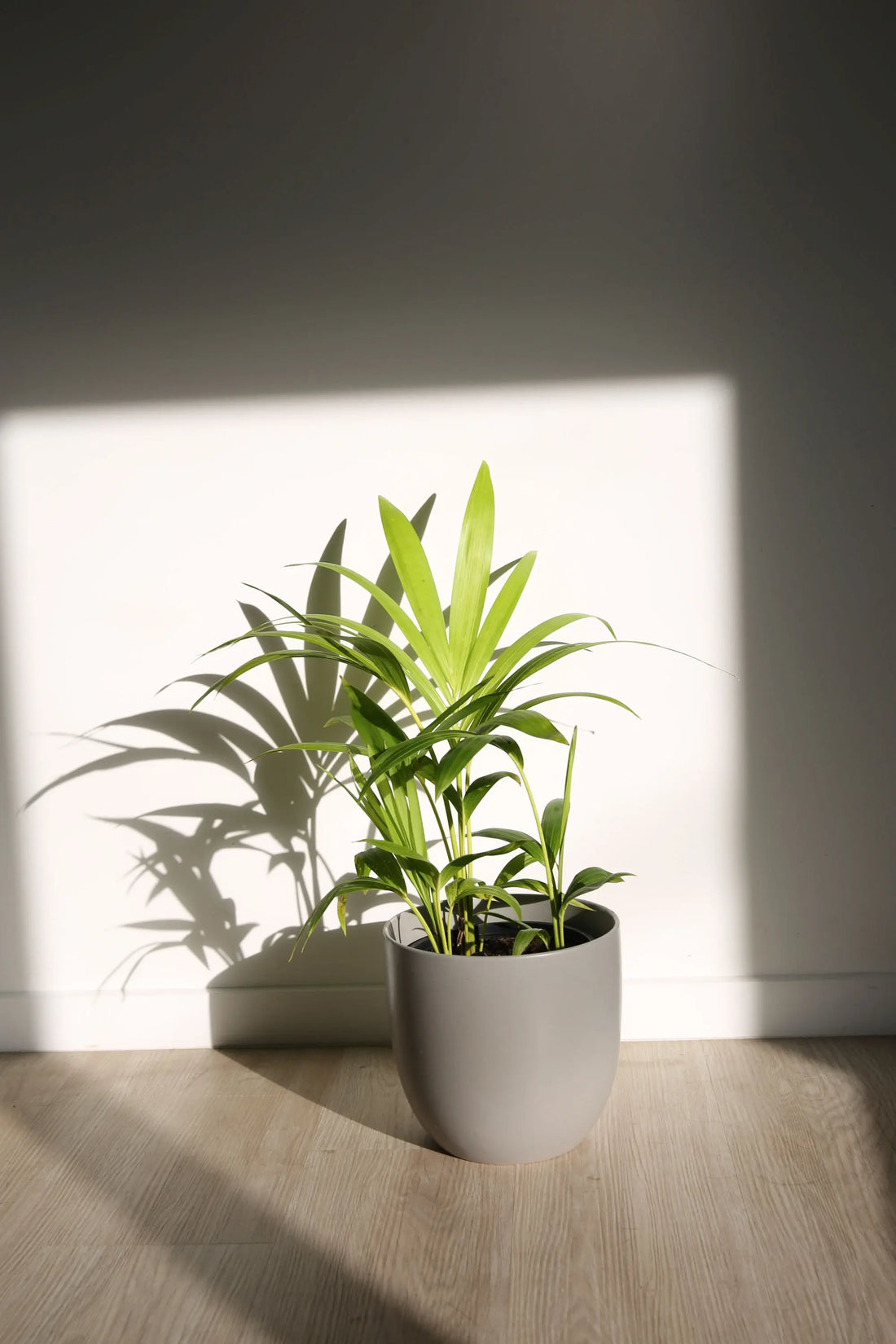The extensive Palm Tree family contains over 200 different genera and nearly 3000 species. Most are found in the wet rainforests of the tropics including Malaysia, Borneo, Sumatra, the upper Amazon and many islands in Asia and the Pacific.
They range from those that thrive in wet, humid environments to those that can exist in barren, almost desert-like conditions. Consequently, you will find something suitable in the Palm family for most areas in New Zealand and they certainly provide that genuine ‘tropical’ look to any indoor or outdoor situation.
However, most of those available in NZ, prefer a temperate or mild-growing environment if outside. A few can tolerate severe sun, low humidity and even frosts due to their deep root systems and tough, waxy fronds.
Palms around the world have proved to be useful for a wide range of products including oils, wax, timber, furniture, baskets, clothing and dyes.
How much light does your Palm need?
Depending on the variety, this can range from full sun to shaded, cooler positions. Indoors, the Kentia Palm prefers shaded light.
What type of soil does your Palm need?
Indoors, moist, humus-rich but well-drained soil is ideal; outdoors use a fertile, good draining soil and remember that they can grow very large with leaves/fronds that shade lower-level plants, so allow plenty of space! Peat moss, compost, bark and granulated or liquid sulphur to lower the soil pH may be necessary, as if grown in alkaline soils, they may suffer a loss in iron, zinc or manganese.
What temperature is best for your Palm?
Most prefer a warm and moist environment and that is why you will see a number of tropical and the NZ Nikau Palm growing in more northern areas of the country. Many have adapted to shaded, swampy, coastal regions as well. Indoors, a range of 15-30C is ideal and the leaves can be misted.
How much water does your Palm need?
The favourite indoor Kentia Palm (Howea Forsteriana) likes moist but not wet soil and will relish a liquid feed from time to time. Outdoors, mulching around the trunk will help to retain moisture.
What is the best fertiliser for your Palm?
Use a controlled-release fertiliser on planting or transferring (indoors or out) A good liquid feed is best during the main growing season in Spring and early Summer.
General Care Tips for Your Palm
They can become unsightly if the dead fronds are left, so cut these off close to the stem. Never cut the top of the tree/trunk as this generally proves fatal! Your indoor palms can be trimmed of any browning fronds whenever necessary.
Scale, mealy bugs and mites can cause issues, so remove any damaged fronds and spray the rest with horticultural/plant-based oils or an insecticide. Fungus if sighted, should be sprayed gently but quickly with a good fungicide.
The Green Grower’s Rating of Palms
Ideal for providing that look of the tropics indoors and out and their leaves/fronds can give a quite different look in terms of shape, size and structure to your indoor collection. Outdoors provide shade, shelter and can attract a range of insects and birdlife.

